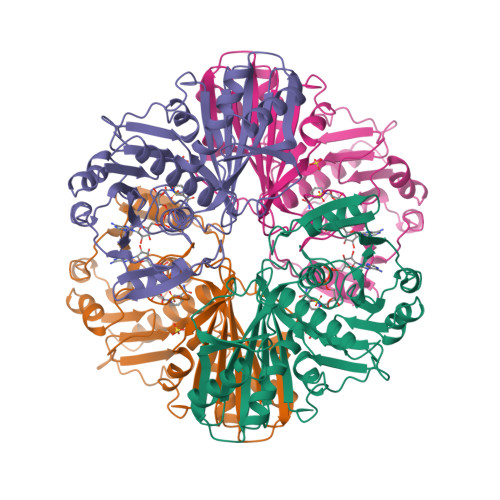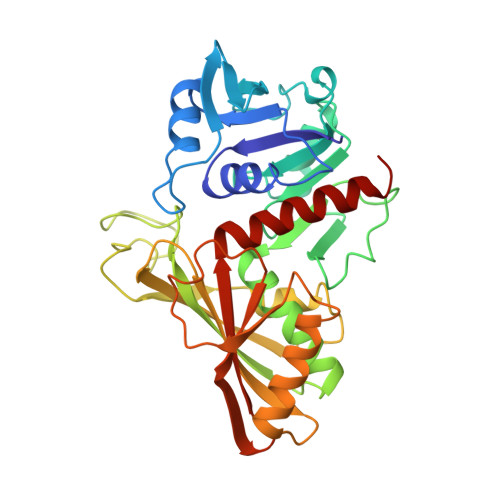Structure of holo-glyceraldehyde-3-phosphate dehydrogenase from Bacillus stearothermophilus at 1.8 A resolution.
Skarzynski, T., Moody, P.C., Wonacott, A.J.(1987) J Mol Biol 193: 171-187
- PubMed: 3586018
- DOI: https://doi.org/10.1016/0022-2836(87)90635-8
- Primary Citation of Related Structures:
1GD1 - PubMed Abstract:
The structure of holo-glyceraldehyde-3-phosphate dehydrogenase from Bacillus stearothermophilus has been crystallographically refined at 1.8 A resolution using restrained least-squares refinement methods. The final crystallographic R-factor for 93,120 reflexions with F greater than 3 sigma (F) is 0.177. The asymmetric unit of the crystal contains a complete tetramer, the final model of which incorporates a total of 10,272 unique protein and coenzyme atoms together with 677 bound solvent molecules. The structure has been analysed with respect to molecular symmetry, intersubunit contacts, coenzyme binding and active site geometry. The refined model shows the four independent subunits to be remarkable similar apart from local deviations due to intermolecular contacts within the crystal lattice. A number of features are revealed that had previously been misinterpreted from an earlier 2.7 A electron density map. Arginine at position 195 (previously thought to be a glycine) contributes to the formation of the anion binding sites in the active site pocket, which are involved in binding of the substrate and inorganic phosphates during catalysis. This residue seems to be structurally equivalent to the conserved Arg194 in the enzyme from other sources. In the crystal both of the anion binding sites are occupied by sulphate ions. The ND atom of the catalytically important His176 is hydrogen-bonded to the main-chain carbonyl oxygen of Ser177, thus fixing the plane of the histidine imidazole ring and preventing rotation. The analysis has revealed the presence of several internal salt-bridges stabilizing the tertiary and quaternary structure. A significant number of buried water molecules have been found that play an important role in the structural integrity of the molecule.


















